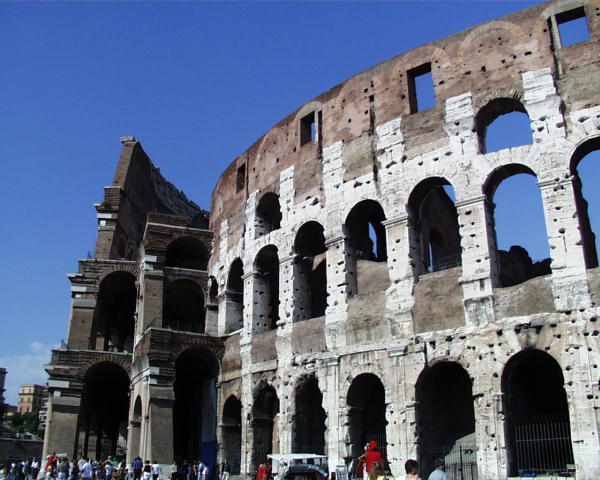|
|
|
Colosseo

Begun by Emperor Vespasian in 72 AD, the Colosseum was completed in 80 AD by his son Titus with the forced assistance of 12000 Jewish captives. Legend credits the Colosseumís design to a Christian named Gaudentius. Titus dedicated the Colosseum with a stupendous show that involved battles between dwarfs and cranes, individual battles between male and female gladiators, struggles with no less than 5000 wild beasts, and finally the flooding of the arena for a naval engagement between war galleys. Emperor Hadrian, in his turn, had the arena planted to resemble a jungle, with every shrub and tree concealing a trapdoor, beneath which lay a lion or lioness ready to spring up and do battle with gladiator-huntsmen. Emperor Commodus himself fought with wild beasts and human gladiators alike in the Colosseum. He wore a lion skin on such occasions in imitation of Hercules, and had his hair sprinkled with gold dust to represent divine inspiration. Gladiator combat continued to be the chief entertainment at the Colosseum until 403; that is to say, even after the triumph of Christianity. The heroism of an Asian monk named Telemachus finally put a stop to it. Leaping the barrier and rushing in among the gladiators, Telemachus loudly implored the crowd to renounce such cruel performances. He was stoned to death on the spot. However, a general revulsion set in immediately afterward, and the protest of Telemachus posthumously carried the day. The Colosseum stood quite whole until the 8th Century. Barb & I wrote this...yea right.